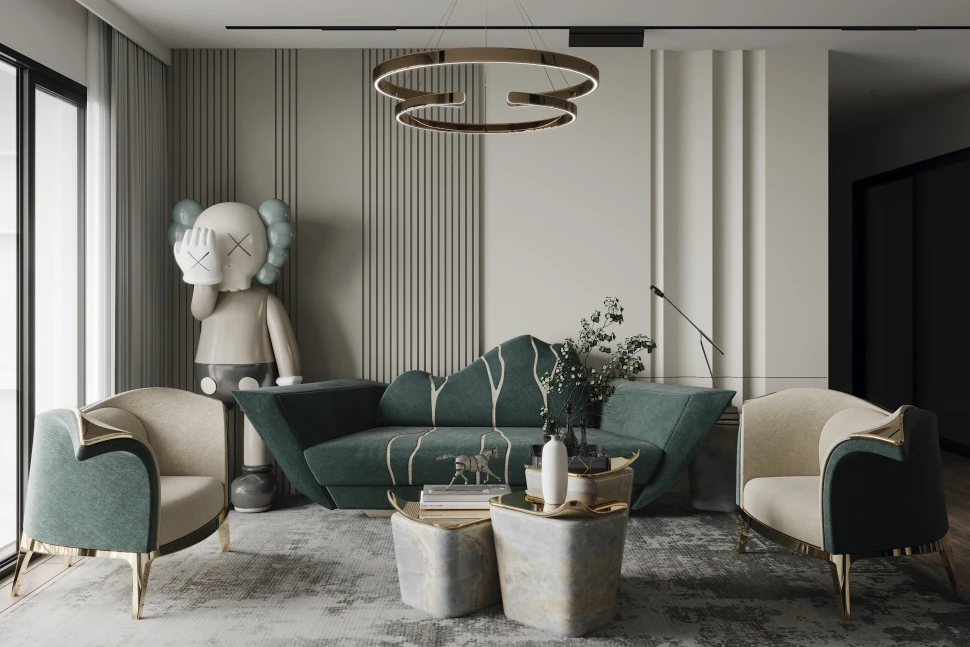Understanding Small Spaces — Challenges and Opportunities
Introduction
Living in a small space can often feel restrictive. Limited square footage can present practical challenges, from fitting furniture to managing clutter. However, a small space doesn’t have to mean sacrificing style, comfort, or functionality. With the right mindset and innovative decor strategies, small homes can become cozy, efficient, and beautifully designed sanctuaries.
This first part of our comprehensive series will explore the unique challenges of small spaces, the psychological impact of living in a compact environment, and how to shift your perspective to embrace small-space living as an opportunity for creativity and smart design.
The Reality of Small Spaces: Common Challenges
1. Limited Floor Area and Storage
One of the most obvious challenges in small homes is the lack of floor space. Fitting all the essentials—sleeping, cooking, relaxing, and working areas—within a small footprint can feel like a puzzle. Additionally, storage is often minimal, leading to clutter and disorganization.
2. Multi-Functionality Requirements
Small spaces require each area to serve multiple purposes. A living room might double as a home office, or a dining table may need to convert into a workspace. This flexibility adds complexity to design and furniture selection.
3. Lack of Privacy
In small homes, especially shared apartments or studio setups, privacy can be a challenge. There may be limited options for dividing space or creating quiet zones.
4. Psychological Effects: Feeling Cramped or Claustrophobic
Small spaces can sometimes feel confining, leading to stress or discomfort. The perception of cramped quarters can affect mood and wellbeing.
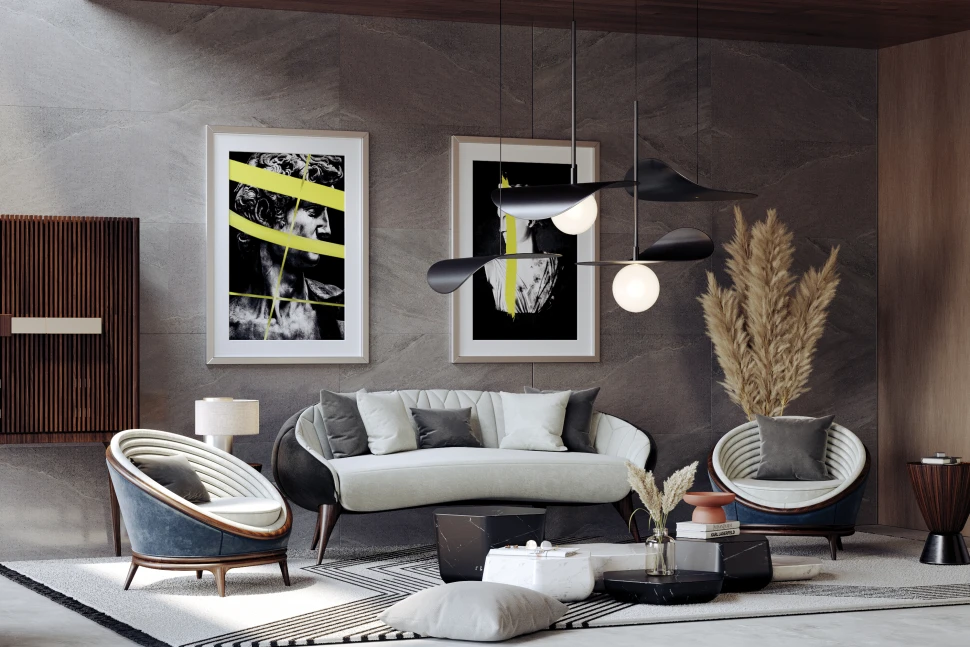
How to Create a Timeless Home Design That Lasts
Turning Challenges into Opportunities
Despite these challenges, small spaces offer unique opportunities to apply innovative design principles that often go overlooked in larger homes:
1. Encouraging Minimalism and Intentional Living
With limited space, every item counts. Small-space living encourages decluttering and intentional selection of decor and furniture, promoting simplicity and mindfulness.
2. Stimulating Creativity in Design
When space is limited, creativity flourishes. Innovative solutions like multifunctional furniture, hidden storage, and clever layouts become essential and can result in stunning, unique interiors.
3. Enhancing Efficiency
Small homes force us to optimize every inch. This focus on efficiency can improve daily life by reducing waste, improving organization, and making tasks easier.
Psychological Shift: Seeing Small Spaces as an Asset
Adopting a positive mindset is crucial. Instead of viewing a small home as a limitation, see it as a canvas for smart, intentional living.
-
Focus on quality over quantity: Invest in well-made pieces that serve multiple functions.
-
Celebrate coziness and intimacy: Small spaces can feel warm and inviting, fostering connection.
-
Embrace adaptability: Flexible spaces support changing needs and lifestyles.
Case Study: Successful Small-Space Living
Consider the example of a young professional living in a 350-square-foot apartment in a bustling city. By choosing foldable furniture, installing floor-to-ceiling shelves, and using light colors with strategic lighting, they transformed their space into a stylish and functional oasis.
This approach illustrates how constraints can inspire clever solutions that don’t sacrifice style or comfort.
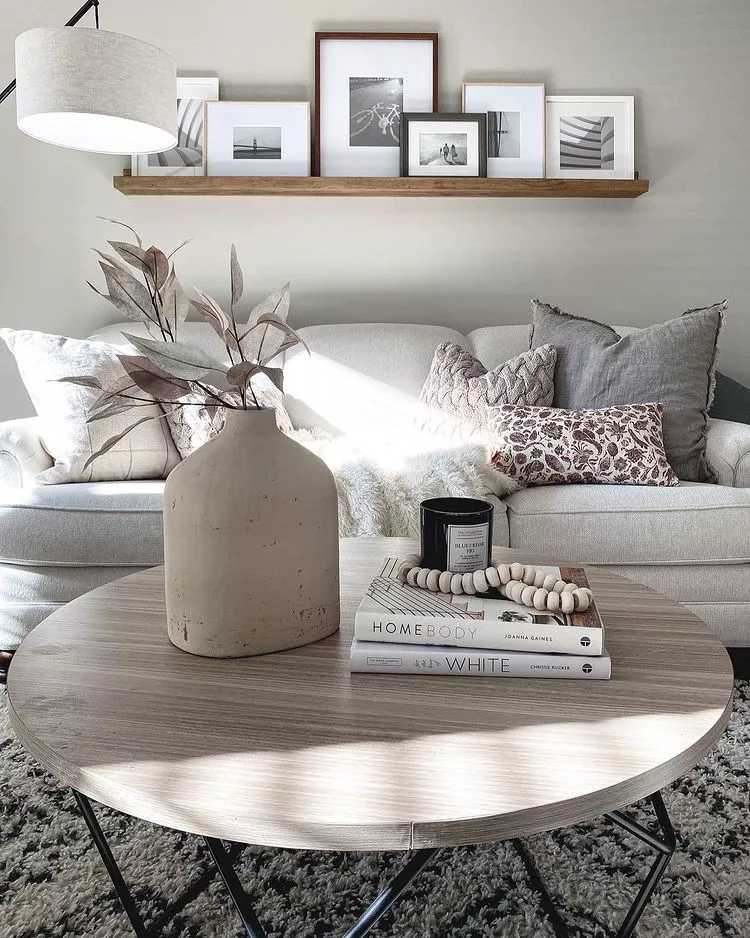
my dreamy house with white theme
Conclusion and What’s Next
Understanding the challenges and opportunities inherent in small spaces sets the foundation for effective design. With the right mindset, small spaces can become showcases of innovation, comfort, and style.
In Part 2, we’ll explore space-saving furniture and layout innovations that turn compact areas into versatile, efficient living spaces.
Space-Saving Furniture & Layout Innovations
Introduction
Once you’ve embraced the mindset that small spaces are a canvas for creativity, the next step is to explore how innovative furniture and smart layouts can transform your home. The right furniture choices and thoughtful arrangement not only save precious square footage but also enhance comfort and functionality.
In this section, we’ll dive deep into the latest space-saving furniture trends, multifunctional pieces, and clever layouts that optimize flow and usability without compromising style.
Multifunctional Furniture: The Heart of Small-Space Living
1. Foldable and Expandable Pieces
Furniture that can fold, collapse, or expand as needed is a game-changer for small spaces.
-
Wall-mounted fold-down desks and tables: Perfect for turning an empty wall into a workspace or dining area, then tucking it away to reclaim floor space.
-
Murphy beds: Wall beds that fold vertically, allowing bedrooms to double as offices or living rooms.
-
Expandable dining tables: Tables that stretch to accommodate guests but stay compact daily.
2. Modular Furniture Systems
Modular furniture allows you to configure seating, storage, and work areas to suit changing needs.
-
Sectional sofas with movable pieces: Rearrange to create intimate conversation zones or open lounging spaces.
-
Stackable or connectable seating: Great for entertaining, and can be broken down to save room afterward.
3. Built-In and Custom Solutions
Custom-built furniture designed specifically for your space can maximize every nook and cranny.
-
Built-in window seats with storage underneath: Combining seating with drawers or cubbies.
-
Custom shelving that fits odd corners or under stairs: Utilizing otherwise wasted space.
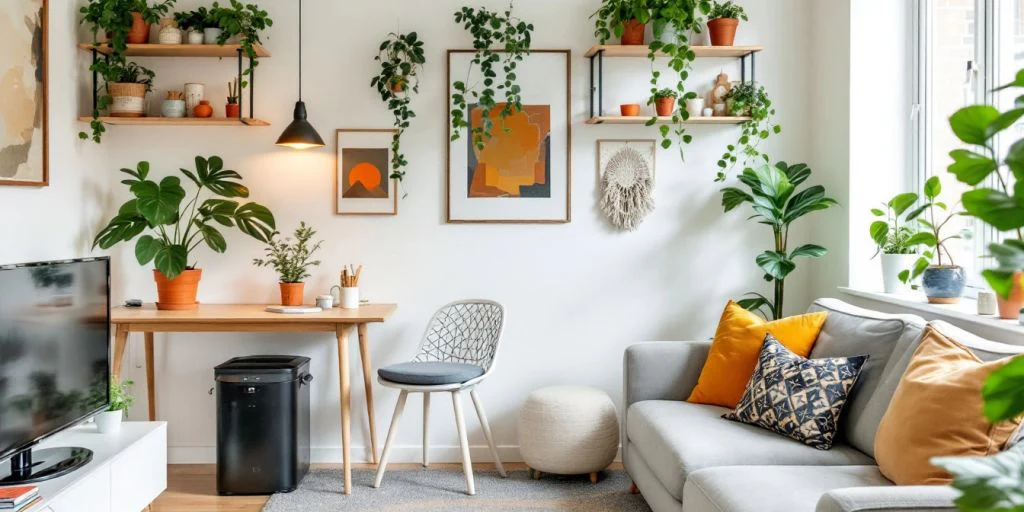
colorful home with plants
Smart Layouts: Optimizing Flow and Functionality
1. Open Concept with Zones
Breaking down walls isn’t always possible, but you can create distinct zones within an open-plan space by using:
-
Area rugs: To define living, dining, or work areas visually.
-
Open shelving or low partitions: To subtly separate spaces without blocking light or view.
2. Vertical Living
Utilizing vertical space is essential in small homes.
-
Tall storage units and shelving: Draw the eye upward and provide ample storage without crowding the floor.
-
Loft beds or raised platforms: Free up floor space below for work, storage, or seating.
3. Flexible Floor Plans
Design with adaptability in mind.
-
Rolling furniture and carts: Easily moved to reconfigure spaces for different activities.
-
Sliding or folding doors and panels: Create privacy or openness as needed without bulky doors.
Trending Innovative Furniture Ideas
1. Hidden Storage Ottomans and Benches
Ottomans and benches that double as storage units are perfect for stashing blankets, toys, or magazines while providing extra seating.
2. Nesting Tables and Stackable Chairs
Compact furniture that nests or stacks neatly when not in use is perfect for saving space without sacrificing social versatility.
3. Convertible Sofas and Daybeds
Sofas that fold out into beds or daybeds that serve as seating during the day maximize function in living rooms doubling as guest bedrooms.
Case Study: A Compact Studio Apartment Makeover
A 400-square-foot studio apartment was transformed using:
-
A Murphy bed with integrated shelving.
-
Fold-down dining table mounted on the kitchen wall.
-
Modular seating that converts to a guest bed.
-
Vertical shelving units to maximize storage.
The result was a functional, stylish home with clearly defined living, sleeping, and dining zones — all within a compact footprint.

Mixed-patterns-in-a-chic-living-room-interior-design-trends-2027-by-Decorilla
Tips for Choosing the Right Space-Saving Furniture
-
Measure carefully: Know your space dimensions precisely to avoid oversized pieces.
-
Prioritize multifunctionality: Choose pieces that serve more than one purpose.
-
Consider aesthetics: Just because furniture is functional doesn’t mean it can’t be stylish.
-
Invest in quality: Durable materials and craftsmanship ensure longevity.
Conclusion and What’s Next
Space-saving furniture and smart layouts are essential tools to unlock the potential of small homes. By thoughtfully selecting and arranging your furniture, you can create a living environment that is both practical and beautiful.
Next up, in Part 3, we’ll explore creative storage solutions that blend seamlessly with your decor, keeping your small space clutter-free and inviting.
Creative Storage Solutions That Blend With Decor
Introduction
One of the biggest obstacles in small-space living is managing storage without clutter. When every square inch counts, the key to an inviting, functional home is clever storage that stays out of sight — or doubles as decor. In this section, we’ll explore innovative storage ideas that integrate seamlessly with your style, from hidden compartments to vertical shelving and decorative organizers.
The Importance of Clutter-Free Living in Small Spaces
Clutter quickly makes small areas feel cramped and chaotic. Effective storage solutions not only improve functionality but also create a sense of calm and order.
-
Psychological benefits: A tidy space reduces stress and improves focus.
-
Enhanced aesthetics: Clean lines and organized storage elevate the overall design.
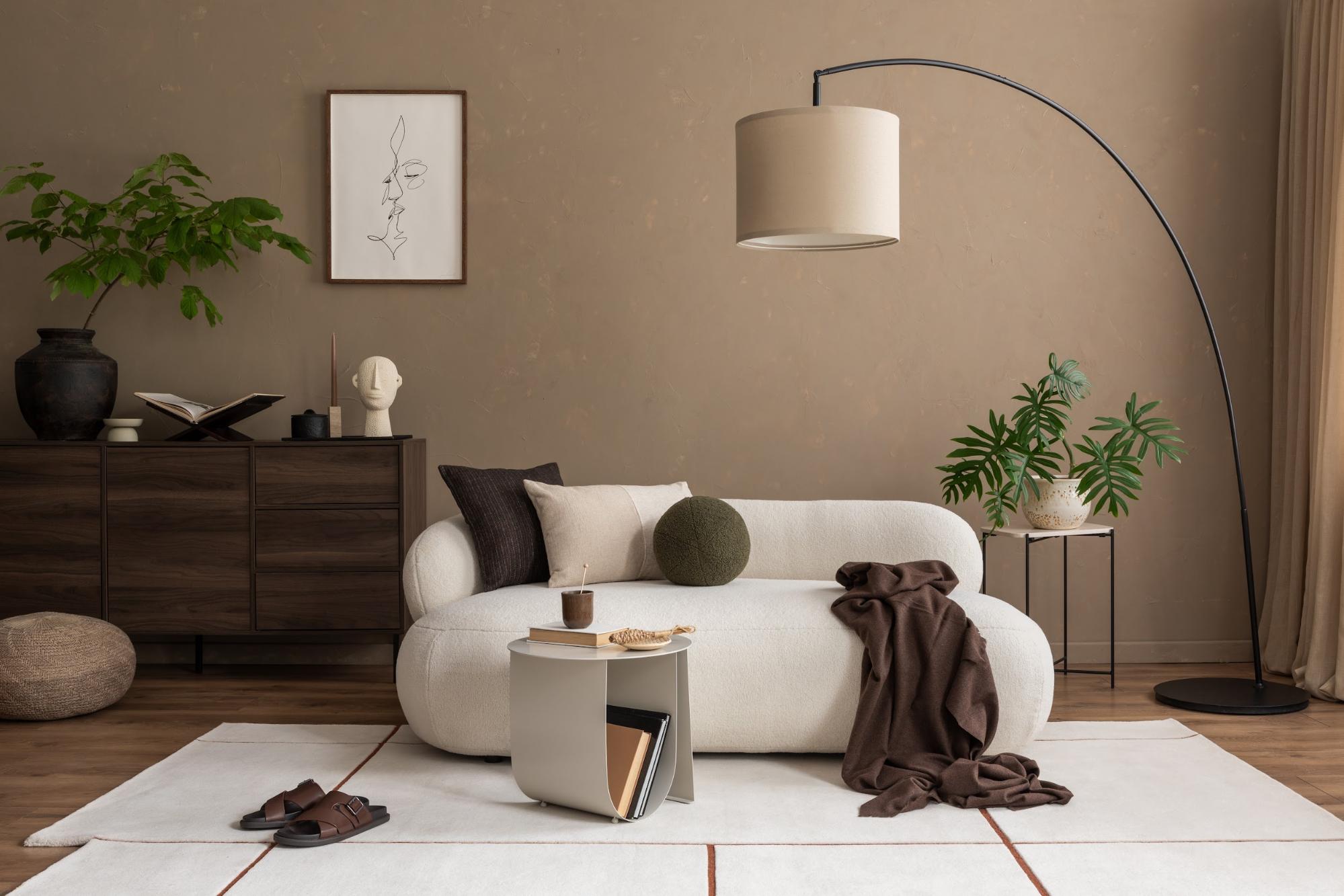
Rounded-Furniture-Creates-Soft-Elegance
Hidden Storage: The Best Kept Secret of Small-Space Decor
1. Under-Bed Storage
-
Drawers or rolling bins: Maximize the often-unused space beneath beds for clothing, linens, or seasonal items.
-
Platform beds with built-in storage: Beds designed with drawers or compartments inside the frame.
2. Built-In Cabinets and Shelving
-
Seamless integration: Custom built-ins that blend into walls maintain a clean look.
-
Floor-to-ceiling units: Maximize vertical space without encroaching on floor area.
3. Furniture With Storage
-
Storage ottomans and benches: Perfect for living rooms or entryways, offering seating plus hidden compartments.
-
Coffee tables with drawers or shelves: Store magazines, remotes, or blankets.
Vertical Storage: Reaching for the Sky
Vertical storage is essential in small homes because it utilizes wall space and keeps floors clear.
-
Floating shelves: Minimalist shelves that create open, airy storage without bulky bookcases.
-
Tall bookcases: Draw attention upward and provide ample room for books, decor, and essentials.
-
Pegboards and wall organizers: Ideal for kitchens, offices, and craft areas.
Decorative Storage Solutions
Storage doesn’t have to be boring or purely functional; it can also add to the style of your space.
1. Stylish Baskets and Boxes
-
Use woven baskets or decorative boxes to organize items on open shelves or under tables.
-
Natural materials add texture and warmth to the room.
2. Artful Display Storage
-
Combine storage and display by using beautiful jars, vintage crates, or color-coordinated containers.
-
Use open shelving to showcase curated collections without clutter.
Innovative Storage Hacks for Small Spaces
1. Door-Mounted Organizers
-
Install racks or hooks on the backs of doors to store shoes, cleaning supplies, or accessories.
-
Great for bathrooms, closets, and kitchens.
2. Stair Storage
-
Utilize the space beneath stairs for built-in drawers, shelves, or a compact workspace.
3. Magnetic Strips and Hooks
-
Mount magnetic strips to hold knives in the kitchen or tools in a workshop.
-
Hooks for keys, jewelry, or bags can be both decorative and practical.
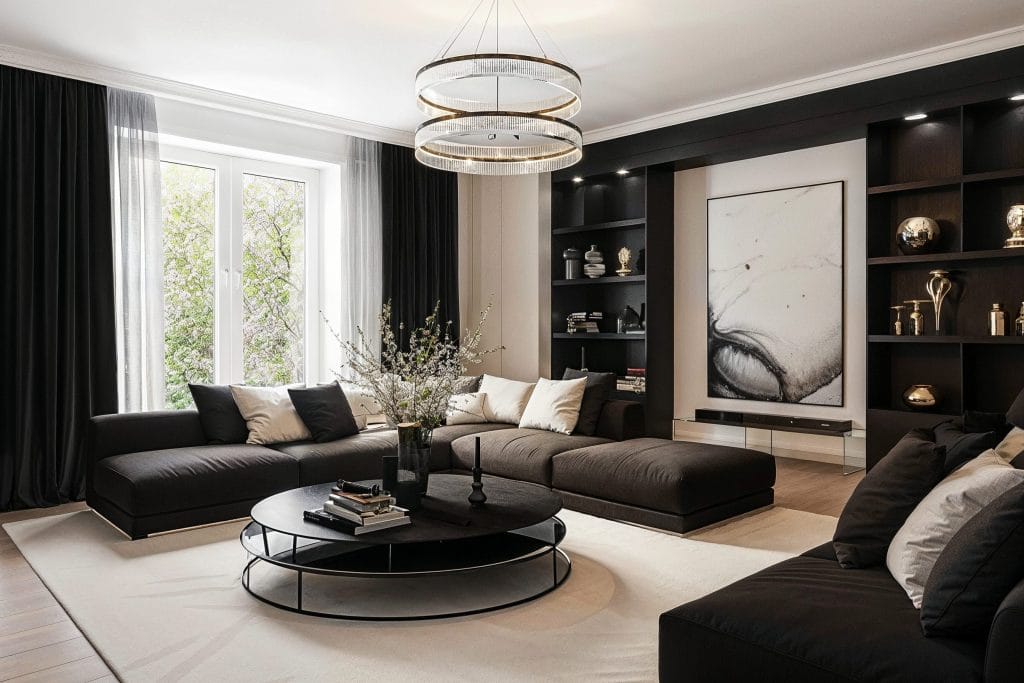
Modern-living-room-with-black-accents-exuding-luxury-in-home-decor-trends-2028-by-Decorilla-
Case Study: Maximizing Storage in a Tiny Urban Loft
A 450-square-foot loft in a city center was revamped using:
-
Custom built-ins with concealed cabinets along the living room wall.
-
A platform bed with deep drawers underneath.
-
Wall-mounted pegboards in the kitchen for utensils and spices.
-
Woven baskets for organizing textiles and accessories.
The result was a harmonious balance between storage and style, making the loft feel spacious and uncluttered.
Cost Table: Storage Solutions Budget Guide
| Item / Feature | Low-End Cost | Mid-Range Cost | High-End Cost |
|---|---|---|---|
| Under-bed storage bins | $30 – $60 | $60 – $120 | $120 – $250 |
| Floating shelves (set of 3) | $50 – $100 | $100 – $250 | $250 – $500 |
| Built-in shelving (custom) | $1,000+ | $3,000 – $6,000 | $6,000+ |
| Storage ottoman | $70 – $150 | $150 – $350 | $350 – $700 |
| Door-mounted organizers | $15 – $40 | $40 – $100 | $100+ |
| Magnetic strips/hooks | $10 – $30 | $30 – $60 | $60 – $120 |
Tips for Maintaining Organized Small Spaces
-
Regular decluttering: Periodically evaluate what you truly need and donate or recycle excess.
-
Designate zones: Assign specific areas for different categories (e.g., books, electronics, linens).
-
Label storage: Use labels on baskets, boxes, or drawers for easy access and upkeep.
-
Use multi-purpose storage: Items that serve both decor and storage functions minimize excess.
Conclusion and What’s Next
Creative storage solutions are vital for turning small homes into well-organized, stylish sanctuaries. By integrating hidden, vertical, and decorative storage into your design, you maintain a clutter-free environment that feels open and inviting.
In Part 4, we’ll explore how lighting, color, and texture tricks can visually expand your small spaces and add warmth and depth.
Using Lighting, Color, and Texture to Expand Small Spaces Visually
While clever furniture and storage solutions are essential for small spaces, the way you use lighting, color, and texture profoundly impacts the perception of space. These design elements can create illusions of openness, depth, and height, transforming even the tiniest rooms into airy, inviting retreats.
In this part, we’ll explore cutting-edge techniques and design secrets to make your small home feel larger, brighter, and more dynamic through thoughtful application of light, color schemes, and textural contrasts.
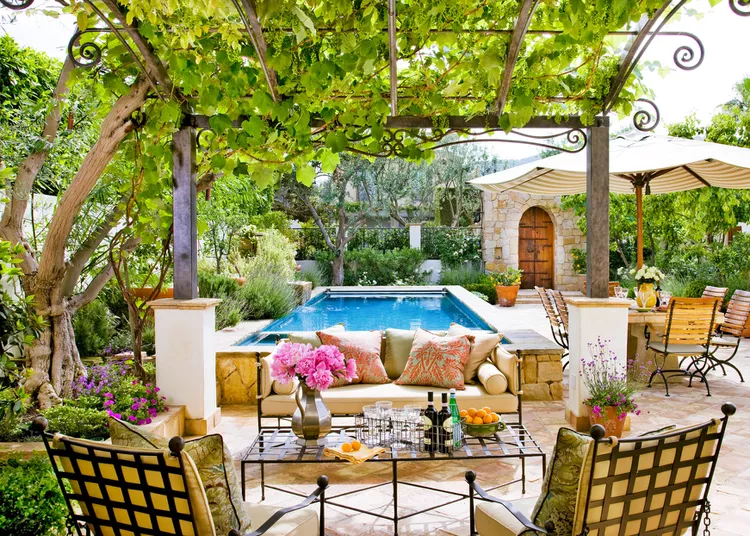
beautiful-backyard
The Power of Lighting in Small Spaces
Lighting is one of the most effective tools to change a room’s atmosphere and perceived size.
1. Layered Lighting: Ambient, Task, and Accent
-
Ambient lighting: The general illumination that fills the room. Use recessed lighting, flush mounts, or elegant ceiling fixtures for soft, even light.
-
Task lighting: Directed light for specific activities like reading, cooking, or working. Think adjustable desk lamps, under-cabinet kitchen lights, or swing-arm sconces.
-
Accent lighting: Highlights architectural features or decor elements. Use LED strips, spotlights, or picture lights to add depth and interest.
2. Maximizing Natural Light
-
Keep window treatments minimal—think sheer curtains or blinds that retract fully.
-
Use mirrors strategically to bounce daylight deeper into the room.
-
Avoid heavy or dark furniture near windows that block light flow.
3. Smart Lighting Technology
-
Dimmable LED bulbs: Adjust brightness to match mood or time of day.
-
Smart bulbs and fixtures: Control color temperature and light intensity with apps or voice commands for ultimate flexibility.
-
Motion sensors: Energy-saving and practical for hallways or closets.
Color Psychology and Small Spaces
Color dramatically affects how a space feels, influencing mood and perception of size.
1. Light and Neutral Colors
-
Whites, creams, soft grays, and pastel shades reflect more light, making rooms feel open and airy.
-
Avoid overly bright or dark colors on walls as they can close in a room.
2. Monochromatic Palettes
-
Using varying shades of the same color creates a seamless look, reducing visual clutter and elongating the space.
-
Accent textures and materials to add interest within the monochromatic scheme.
3. Strategic Use of Bold Colors
-
Apply bright colors on a single accent wall or in accessories to add personality without overwhelming.
-
Use vertical stripes or color blocking to visually increase height or width.
Texture: Adding Depth Without Clutter
Textures add tactile interest and dimension, essential for making small spaces feel layered and rich.
1. Mix Matte and Glossy Finishes
-
Glossy surfaces (e.g., lacquered cabinets, glass tables) reflect light, enhancing brightness.
-
Matte finishes add softness and warmth without glare.
2. Incorporate Natural Materials
-
Wood grains, stone textures, woven fabrics, and natural fibers create cozy, inviting environments.
-
Combine smooth and rough textures for contrast.
3. Textural Accents
-
Rugs with subtle patterns, textured throw pillows, and curtains add layers without bulk.
-
Wall treatments like grasscloth wallpaper or 3D panels bring tactile interest.
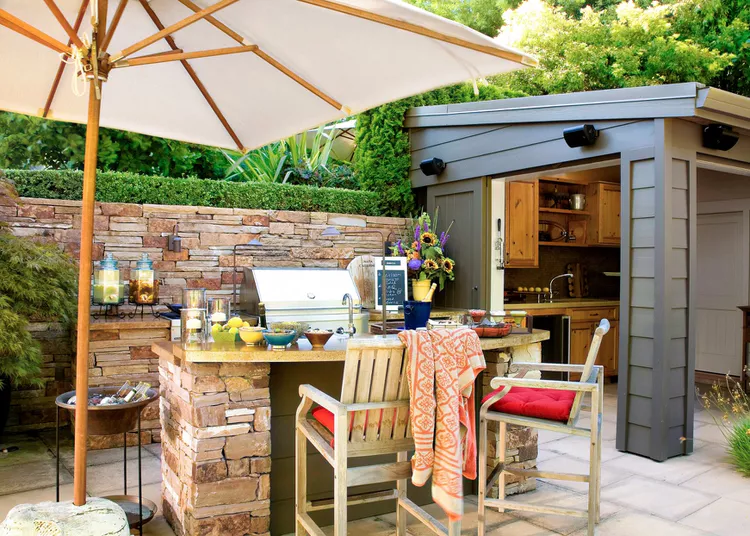
outdoor-kitchen-3Xay
Innovative Techniques to Visually Expand Small Spaces
1. Mirrors and Reflective Surfaces
-
Large, frameless mirrors create illusions of depth and double light.
-
Mirrored furniture or backsplashes can enhance spaciousness.
2. Floating Elements
-
Floating shelves and vanities keep floors clear, adding openness.
-
Wall-mounted lighting and furniture reduce visual clutter.
3. Transparent and Lightweight Furniture
-
Acrylic chairs and glass tables appear less obtrusive, maintaining sightlines.
-
Use furniture with slim legs or open frames to reduce bulk.
Case Study: Transforming a Small Bedroom with Light and Color
A 150-square-foot bedroom was made to feel almost double its size by:
-
Painting walls in a soft dove gray with white trim.
-
Installing layered lighting: recessed ceiling lights, bedside sconces, and a dimmable floor lamp.
-
Adding a large mirror opposite the window.
-
Using sheer curtains and light-colored bedding with textured throw blankets.
-
Incorporating a floating desk and acrylic chair.
The transformation created a bright, airy, and comfortable retreat that feels much larger than its actual dimensions.
Cost Table: Lighting, Paint, and Texture Budget Guide
| Item / Feature | Low-End Cost | Mid-Range Cost | High-End Cost |
|---|---|---|---|
| LED recessed lights (per unit) | $20 – $50 | $50 – $100 | $100 – $200 |
| Smart bulbs (per bulb) | $10 – $25 | $25 – $50 | $50 – $100 |
| Quality paint (per gallon) | $20 – $40 | $40 – $80 | $80 – $150 |
| Large frameless mirror | $100 – $250 | $250 – $600 | $600 – $1,200 |
| Acrylic chairs | $50 – $100 | $100 – $250 | $250 – $600 |
| Floating shelves (set of 3) | $50 – $100 | $100 – $250 | $250 – $500 |
Tips for Applying Lighting, Color, and Texture
-
Test paint colors with samples: See how they look at different times of day before committing.
-
Use layered lighting for flexibility: Mix ambient, task, and accent lights.
-
Don’t overcrowd: Keep a balance between textures to avoid sensory overload.
-
Maximize natural light: Keep windows unobstructed and use reflective surfaces.
Conclusion and What’s Next
Lighting, color, and texture are transformative tools that can expand small spaces visually and emotionally. Thoughtful application creates environments that feel open, inviting, and tailored to your lifestyle.
In the final part, Part 5, we will cover innovative smart home tech and decor trends that revolutionize small space living, including AI-powered systems and multifunctional gadgets.
Smart Technologies and Futuristic Decor Trends for Small Spaces
Introduction
As technology advances, the way we design and interact with our homes evolves dramatically. For small spaces, integrating smart home technologies and embracing futuristic decor trends can optimize every inch for functionality, comfort, and style.
In this final part, we explore the most exciting innovations—from AI-powered smart systems to modular and adaptive furnishings—that make small-space living easier, more efficient, and more beautiful than ever before.
AI-Powered Smart Home Systems
1. Intelligent Climate Control
AI-enabled thermostats learn your schedule and preferences, adjusting temperature settings to save energy and maximize comfort. Compact smart vents can open and close automatically to regulate airflow room-by-room, perfect for small multi-purpose spaces.
2. Voice-Controlled Lighting and Appliances
Voice assistants like Alexa, Google Home, and Siri integrate seamlessly with lighting, blinds, and appliances. This hands-free control reduces clutter and enhances convenience, especially in compact homes where physical switches can crowd walls.
3. Smart Storage Solutions
Emerging smart storage systems use sensors and AI to track belongings. Imagine a closet that alerts you if you’re running low on essentials or helps you locate items quickly—saving time and reducing clutter.
Modular and Multi-Functional Furniture Innovations
1. Transforming Furniture with Motorized Mechanisms
Beds that fold into walls with push-button controls, sofas that convert into desks, and tables that adjust height or shape electronically are revolutionizing space use. These innovations combine style with practical automation, ideal for modern small homes.
2. Furniture with Built-in Tech
Desks with wireless charging stations, sofas with integrated speakers and USB ports, and coffee tables with hidden refrigeration drawers exemplify furniture that meets today’s tech needs while saving space.
Advanced Materials and Sustainable Innovations
1. Smart Glass and Windows
Electrochromic smart glass allows you to adjust window transparency with a switch or app, controlling privacy and light levels without blinds or curtains—streamlining small room aesthetics.
2. Sustainable and Space-Saving Materials
Innovations in sustainable materials—like bamboo composites and recycled plastics—offer durable, lightweight, and eco-friendly furniture options that suit small spaces and conscious consumers.
Virtual and Augmented Reality for Space Planning
VR and AR apps enable homeowners to visualize furniture arrangements and decor choices in 3D before purchasing. These tools reduce trial-and-error, ensuring every piece fits perfectly and complements the space.
Biophilic Design Meets Tech
Smart indoor gardens and self-watering planters bring nature inside without the maintenance hassle. Integrated grow lights simulate sunlight cycles, enhancing wellness and air quality even in windowless small rooms.
Cost Table: Smart Tech and Innovative Furniture Investment Guide
| Item / Feature | Low-End Cost | Mid-Range Cost | High-End Cost |
|---|---|---|---|
| AI Smart Thermostat | $100 – $150 | $150 – $250 | $250 – $400 |
| Voice-Controlled Smart Lights (per bulb) | $15 – $30 | $30 – $60 | $60 – $100 |
| Motorized Murphy Bed System | $1,000 – $1,500 | $1,500 – $3,000 | $3,000 – $6,000 |
| Furniture with Built-in Wireless Charging | $200 – $400 | $400 – $700 | $700 – $1,200 |
| Electrochromic Smart Glass Panels (per sq ft) | $50 – $80 | $80 – $150 | $150 – $300 |
| Smart Indoor Garden System | $50 – $150 | $150 – $300 | $300 – $600 |
Practical Tips to Embrace Smart and Innovative Decor
-
Start small: Integrate one or two smart devices to test functionality and convenience.
-
Focus on multi-functionality: Prioritize furniture and decor items that serve multiple purposes.
-
Plan for connectivity: Ensure your Wi-Fi network can handle multiple smart devices efficiently.
-
Invest in sustainability: Choose eco-friendly materials and energy-efficient products.
Case Study: A High-Tech Studio Apartment Makeover
A 300-square-foot studio was transformed with:
-
AI thermostat and smart lighting controlling ambiance and energy use.
-
A motorized Murphy bed that converts into a home office with built-in charging ports.
-
Electrochromic smart glass replacing bulky curtains.
-
Smart indoor planter enhancing air quality and adding greenery.
This transformation resulted in a sleek, ultra-functional, and stylish living space that maximizes comfort and utility.
Final Thoughts: The Future of Small Space Living
Small spaces no longer mean sacrificing style or convenience. By embracing smart technologies and innovative decor, you can create a home that adapts dynamically to your lifestyle, maximizing every inch without compromise.
The future of small space design lies at the intersection of creativity, technology, and sustainability—empowering you to live smarter and more beautifully.
AI-Driven Personalization and Adaptive Living Environments
The future of small space living is smart, intuitive, and deeply personalized. Artificial Intelligence is no longer limited to gadgets — it’s becoming the brain behind adaptable homes that reshape themselves around your needs, moods, and routines.
In this final chapter, we explore next-level AI applications and adaptive environments transforming compact living from a challenge into an effortless, immersive experience.
AI-Powered Personalized Environments
1. Dynamic Space Configuration
Imagine walls, furniture, and lighting that physically shift and adjust automatically based on your schedule or activity. AI-powered robotic furniture systems can rearrange spaces — converting a living room into a workout studio or a dining area in minutes without manual effort.
2. Mood-Sensing Ambience
Advanced AI uses biometric sensors, voice tone, and facial recognition to read your mood and adjust lighting, temperature, and soundscapes accordingly. This ensures your small space always feels comfortable, calming, or energizing based on how you’re feeling.
3. Predictive Maintenance and Inventory
AI monitors wear and tear of furniture and appliances and predicts maintenance needs before breakdowns happen. It can also track pantry stocks and household supplies, prompting replenishment reminders and even ordering automatically.
Adaptive Modular Systems
1. Morphing Modular Units
Next-gen modular furniture employs AI to “learn” your preferences and automatically suggest or enact different configurations for seating, sleeping, working, or storage. These pieces are embedded with sensors and motors enabling self-reconfiguration.
2. Smart Surface Technology
Tables, countertops, and floors embedded with smart surfaces can display information, change textures, or transform shape to suit diverse needs—such as becoming a whiteboard, charging pad, or ergonomic work surface.
AI and Sustainable Living in Small Spaces
1. Energy Optimization
AI-driven energy management systems analyze your home’s usage patterns, optimizing power consumption and integrating with renewable energy sources like solar panels or battery storage to reduce bills and footprint.
2. Waste Reduction
Smart kitchens equipped with AI-powered composters and waste sorters help small space dwellers minimize garbage output, support recycling efforts, and even generate fertilizer for indoor plants.
Case Study: The AI-Integrated Micro-Apartment
A micro-apartment in a busy city was redesigned with:
-
AI robotic furniture that morphs between workspace, dining, and bedroom setups at the touch of a button.
-
Mood-adaptive lighting and sound system responding to occupant’s emotions.
-
Smart energy and waste management minimizing environmental impact.
-
Predictive maintenance alerts reducing repair costs and effort.
The result? A seamless, stress-free lifestyle in just 250 square feet.
Cost Table: Cutting-Edge AI Home Innovations
| Item / Feature | Low-End Cost | Mid-Range Cost | High-End Cost |
|---|---|---|---|
| AI Robotic Furniture System | $5,000 – $8,000 | $8,000 – $15,000 | $15,000 – $30,000 |
| Mood-Sensing Smart Lighting | $200 – $400 | $400 – $700 | $700 – $1,200 |
| Smart Surface Technology (per sq ft) | $150 – $300 | $300 – $600 | $600 – $1,000 |
| AI Energy Management System | $300 – $600 | $600 – $1,200 | $1,200 – $2,500 |
| AI Waste Sorting & Composting Unit | $500 – $900 | $900 – $1,500 | $1,500 – $2,500 |
Practical Advice for Embracing AI in Small Spaces
-
Start with integration: Begin by connecting your existing smart devices with AI platforms for enhanced automation.
-
Focus on key pain points: Identify the most tedious or space-consuming tasks (like furniture rearrangement or lighting control) and prioritize AI solutions there.
-
Balance tech and comfort: Ensure AI enhances your lifestyle without overwhelming you — simplicity and usability matter most.
-
Plan for upgrades: Choose modular AI systems that can be expanded or updated as technology advances.
Final Thoughts: AI as the Ultimate Space Maximizer
AI is redefining small space living, turning limitations into opportunities by crafting homes that adapt, anticipate, and respond in real time. This synergy of technology, design, and personalization promises not just to maximize space—but to elevate the very experience of home.
By embracing AI-driven innovations, small space dwellers can look forward to homes that are more flexible, sustainable, and attuned to their unique needs than ever before.
Finalization: Conclusion and FAQ
Conclusion: Living Large in Small Spaces
Maximizing small spaces is no longer about mere survival — it’s about thriving with style, comfort, and innovation. From clever multifunctional furniture to cutting-edge AI-driven environments, today’s small homes offer limitless possibilities to reflect your personality while optimizing every inch.
By embracing thoughtful design, sustainable materials, and smart technology, you can transform your compact living areas into versatile sanctuaries that adapt with you through every phase of life. Small space living is not a limitation but an invitation to creativity, efficiency, and mindful living.
Remember, the key is intentionality: every piece, every gadget, every layout should serve a purpose and bring joy. When done right, even the smallest space can feel expansive, inviting, and truly yours.
FAQ: Frequently Asked Questions
Q1: How can I make a small room feel bigger without remodeling?
A1: Use light colors, maximize natural light, incorporate mirrors, choose multi-functional furniture, and keep clutter to a minimum. Smart lighting and open shelving can also enhance openness.
Q2: What is the most cost-effective way to maximize small spaces?
A2: Start with decluttering and organizing. Invest in modular or multi-purpose furniture and use vertical space for storage. Adding mirrors and light paint colors provides a low-cost visual expansion.
Q3: Are smart home technologies worth it for small spaces?
A3: Absolutely. Smart devices save space by combining functions (e.g., lighting + speakers), reduce the need for bulky controls, and enhance convenience—ideal for compact homes.
Q4: How do I maintain a timeless look in a small home?
A4: Focus on classic, neutral color palettes, quality materials, and simple shapes. Mix textures for interest and add personal touches that don’t overwhelm. Invest in pieces that are versatile and durable.
Q5: Can AI really help with space optimization?
A5: Yes, emerging AI-powered furniture and environment systems can adapt layouts dynamically, monitor usage patterns, and customize your space in real-time, elevating comfort and efficiency.
Additional Resources and Inspiration
Final Words
Living well in a small space is an art—and a science. By combining timeless design principles with modern innovations, you create a home that’s not only efficient but also deeply personal and inspiring.
Remember, your home is your sanctuary. Let your small space tell a big story.


